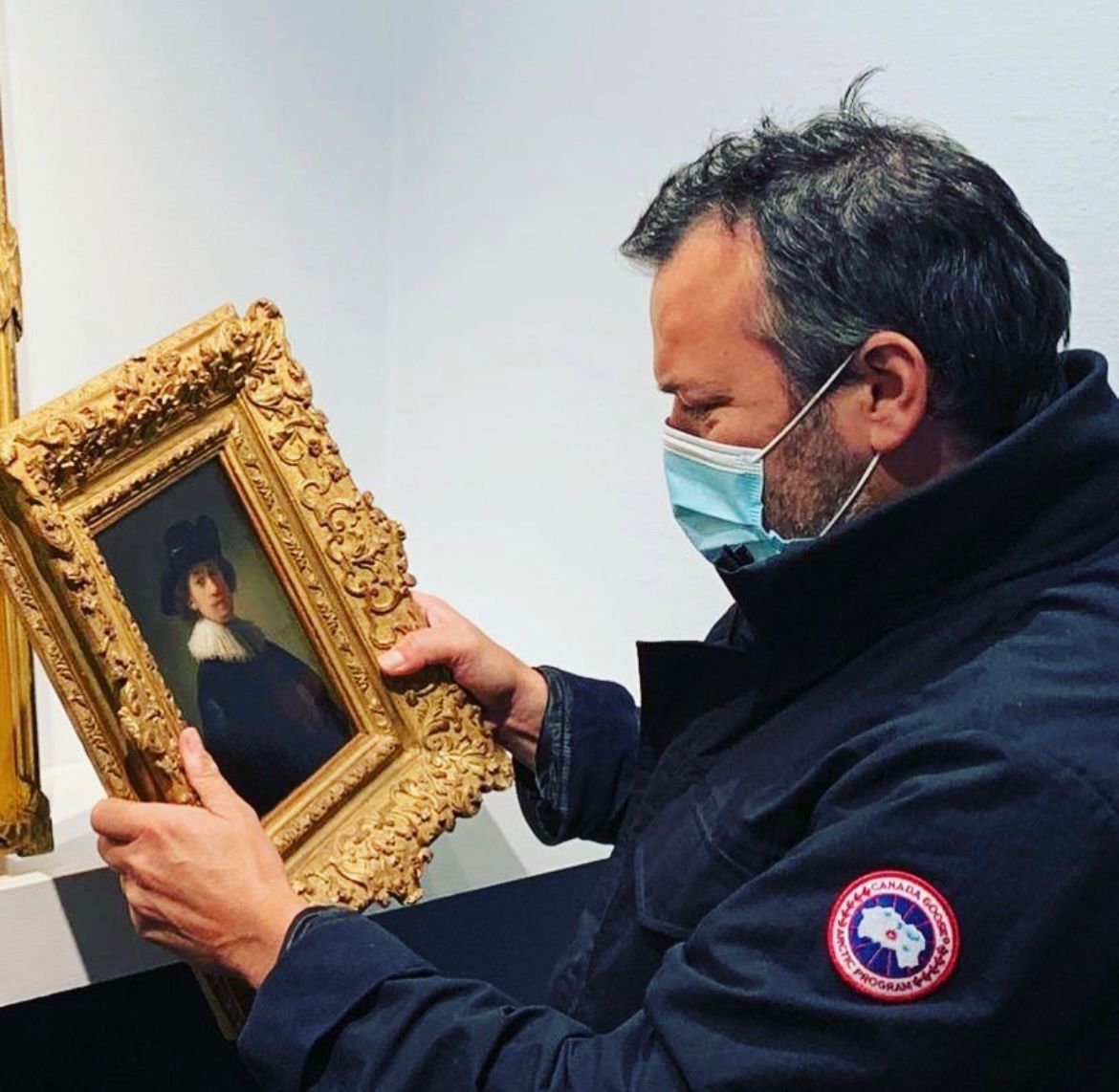Covid-19 and the Art Market
March 12, 2020
So the coronavirus story continues at pace… the global financial markets are in turmoil and on Monday in London we witnessed the biggest one day fall of the FTSE 100 index since the financial crisis of 2008. The entire of Italy is quarantined in what Italian PM Giuseppe Conte has called their ‘darkest hour’, while in the US, despite reassuring words (or tweets) from the President, it’s clear that people are taking fright at what is the first truly global pandemic in living memory.
So what does this mean for the art market? Well, before I try answering this question it’s important first to acknowledge those who are suffering because of this outbreak. Many people continue to believe it’s a storm in a teacup, and I for one hope that may prove true. However, it’s still causing great pain and very real suffering to many people across the world, and to those we offer our thoughts and prayers.
Back to the question – the answer is of course that we don’t actually know. We neither know how far this virus will spread nor how long it will last, so of course we can’t accurately predict anything here. Instead, the best we can do is make assumptions based on historical precedent and our own market intelligence, and these are laid out as follows:
Firstly, to state the obvious, this is going to be very disruptive in the short-term. The art-market is a global market that relies heavily on international travel, art fairs, auction weeks and exhibitions. With travel being curtailed and large scale events being cancelled all across the globe, the day-to-day functioning of the industry is going to be challenged. It’s hard to see the Frieze fair in New York taking place in just 8 weeks time… will the May New York auctions be cancelled too? It’s certainly not an impossibility, particularly if the US and UK follow a similar trajectory to Italy.
The second obvious point is that the market will be severely challenged on both the supply and demand side over the coming weeks and months. Consigning artworks for sale during uncertain times is never hugely appetising, and this will almost certainly impact on New York’s May Auction season, which until recently was being forecast as the greatest auction season (in terms of top quality fresh material) of the past few years. On the demand side, our animal instincts dictate that we’re not typically at our most acquisitive when the financial markets / world feel like it’s imploding. So a contraction in activity is inevitable – sales being cancelled or postponed, collectors less focused or out of the game entirely, less material coming to market, higher BI (failed sales at auction) rates etc…. all fairly probable.
So beyond the obvious – what do we think will happen? Well, in short, it’s going to be a bumpy ride for the art market, but here at Beaumont Nathan we don’t think it’s all doom and gloom. The closest comparison we have to compare with the present situation is the 2008-2009 financial crisis, so it’s worth just recapping on what happened back then. Firstly, the art-market lagged behind the financial markets; in 2008 global art sales fell by a relatively modest (by comparison) 12% to $62BN, and we all remember the now infamous Damian Hirst sale in October 2008 – a $200M dollar ‘white glove’ auction on the same day that Lehman Brothers filed for insolvency. It wasn’t until 2009 that the real effects of the global financial crisis were felt – that year global art sales fell by an additional 26% to a little over $39.5BN. Nowhere was this more evident than in the auctions – collector Eli Broad famously coined the term ‘half-price sale’ to describe the New York Contemporary Evening sale that achieved $114M against a pre-sale low-estimate of $227M with 32% of the lots going unsold and many selling for a fraction of their estimates – though it’s worth noting that he acquired multiple lots that sale! And of course there were a number of high profile auction failures throughout this time – from Bacon’s self-portrait failing at $40M (even after the reserve was lowered to $25M), Rothko at $30M, Lichtenstein at $20M…and so on…
However, the old adage that quality and scarcity prevail also rang true. Even as the world stared into the abyss, there were some extraordinary prices paid for the very best material. Among these were Andy Warhol’s Eight Elvises, which became one of the most expensive artworks in history when it was sold privately for an alleged $100M in November 2008, while Raphael’s Head of a Muse made £29M at auction in 2009. However, perhaps the best example to articulate this point was the sale of the Collection of Yves St Laurent, which took place in Paris in February 2009. The three-day auction of this extraordinary collection grossed €380M, with 60 individual lots selling in excess of €1M. In spite of the worst financial crisis since 1929, 95% of the lots found buyers and it became the highest grossing single-owner sale in history. By 2010, global art sales had risen to $66BN, a higher total than 2007, and it was largely back to business as usual.
So from looking at what happened in 2008-09, we learned two important things that can helps us assess / forecast the current situation:
Firstly, the contraction in the art market back then was short and very sharp, but it rebounded remarkably quickly, far quicker than anyone expected at the time. However, in 2008/9 there were real economic reasons that led to the crisis, unlike today, where the underlying global economy is relatively robust by comparison. While we’re not playing down the severity of this situation and its impact on the global economy, given the entirely different circumstances surrounding the coronavirus situation vs the global financial crash, we anticipate that the hit to the art market, while it may be deep, will rebound even quicker this time than in 2008/9. So the window to emulate Eli Broad may be a short one. Once we see an end to the virus – or we learn to live with it – we expect there to be a frenzy of activity on both the buy and sell sides as the art market churns back to life.
Secondly, by and large the prices for the best and rarest material actually remained very robust throughout the financial crisis. The middle market and B-quality material took a severe hit – as we expect they will this time around – but as Yves St Laurent’s sale proved, even in the eye of the storm the demand for the very best held strong. There are no examples – that I am aware of – of collectors who were brave enough to buy in those turbulent times regretting what they bought, especially given the speed at which the market rebounded and the subsequent dramatic price growth in the ‘masterpiece’ end of the market that followed. So don’t be surprised to see intense bidding for A+ material as the competition intensifies around the smaller number of truly great artworks that come to market, and don’t be surprised to see the seasoned old dogs at play during this crisis… as Warren Buffet said ‘be fearful when others are greedy but greedy when others are fearful’.
We can also look to less fashionable sectors of the market for clues as to what might happen… The art market today is predominantly focused on Post-War and Contemporary art, but here at Beaumont Nathan we advise clients across the entire spectrum, including what is almost certainly the most uncommercial sector of all… Victorian pictures. This once mighty sector has fallen out of fashion and has suffered on both the supply side (a dearth of good material) and demand (very few buyers), to the extent that it’s not uncommon for 30-40% of the lots in a given sale to go unsold. However, repeated experience tells us that it is actually remarkably hard to buy the top 3-5 lots in each sale, as the small number of serious collectors fight tooth and nail to secure them, causing unpredictable high prices that invariably confound most art market professionals. This scenario may well now play out across the ‘hotter’ sectors of the market.
So what’s our advice in all of this? Simple really – firstly, be highly selective and stick only to the best, and give anything other than A-quality artworks a wide berth for now. ‘Hot’ artists, speculative artists, and second-tier names can all wait – this is the time for museum-quality artists and artworks and little else. Secondly, be disciplined and tough, but don’t sit on your hands in the expectation that there’ll be better deals at the end of all of this, as history has shown this is unlikely to happen. Masterpieces remain masterpieces, and not a single one of those bold collectors who acquired them in 2008/09 regretted doing so.
Stay well and be safe.
Wenty
Wentworth Beaumont
Co-Founder
Beaumont Nathan

